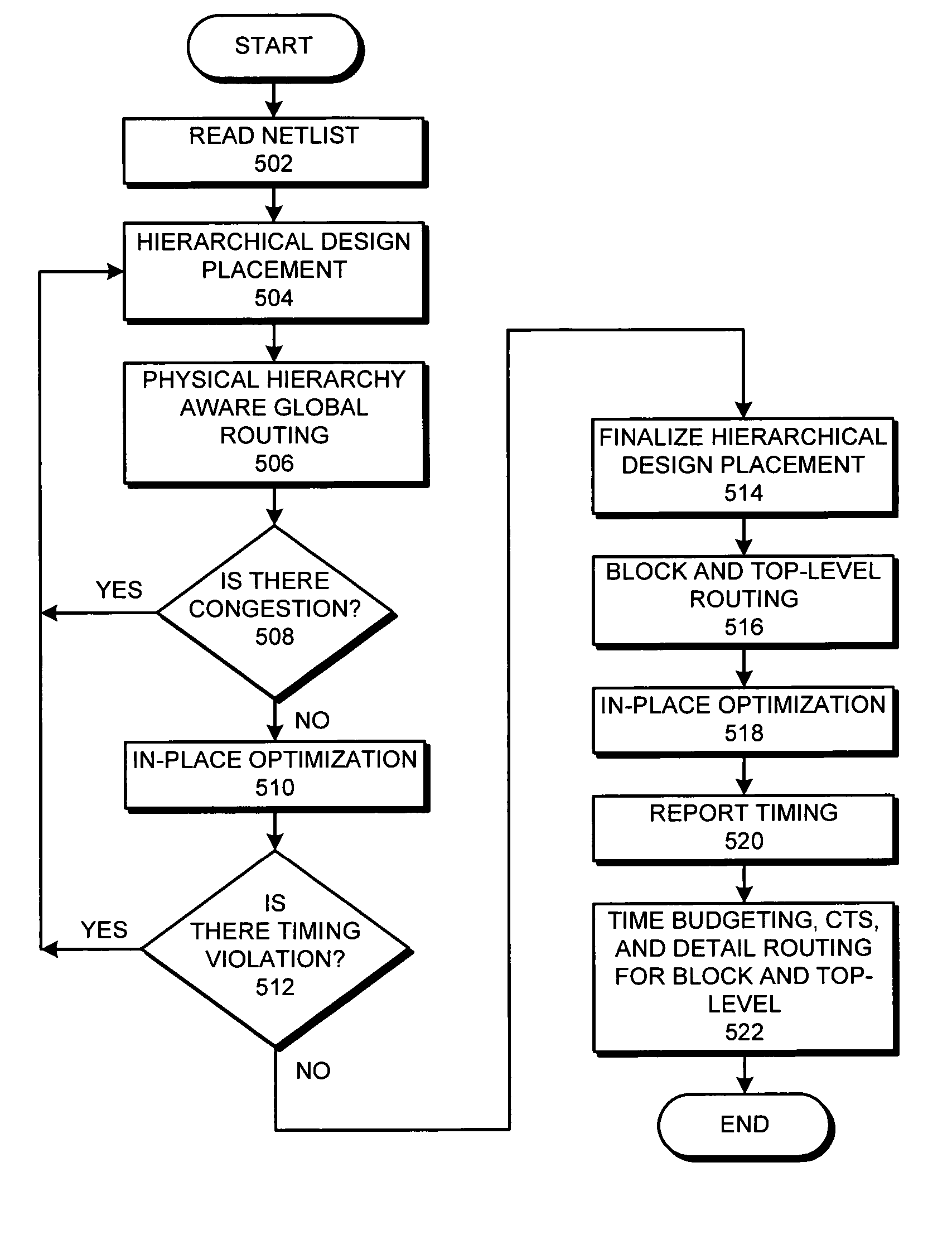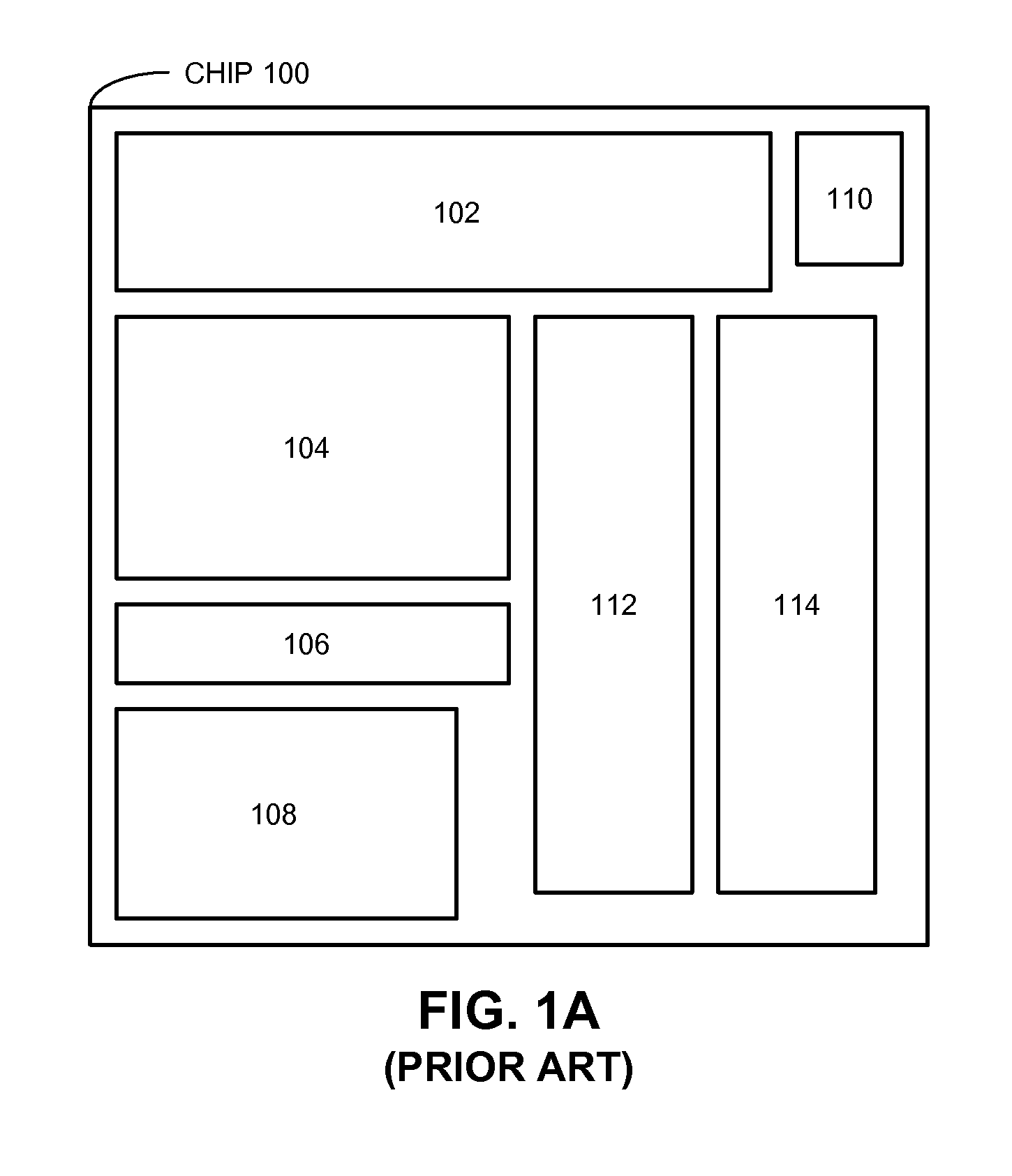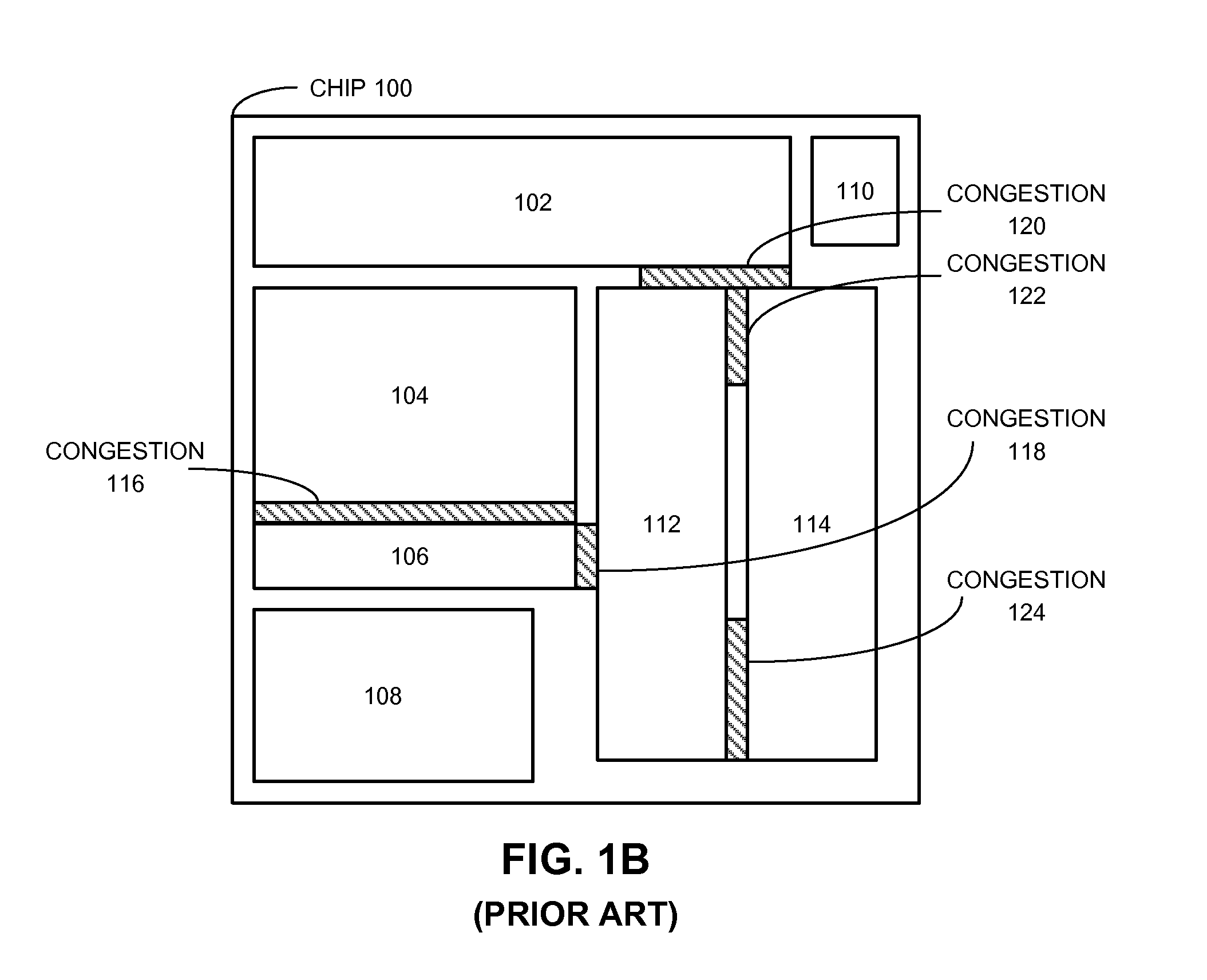Method and apparatus for routing an integrated circuit
a technology of integrated circuits and routing methods, applied in the field of integrated circuit routing techniques, can solve the problems of inaccurate timing violations, increased complexity of corresponding ic designs, and inability to accurately report congestion in top-level channels or within physical partitions, etc., and achieve the effect of facilitating early detection of congestion
- Summary
- Abstract
- Description
- Claims
- Application Information
AI Technical Summary
Benefits of technology
Problems solved by technology
Method used
Image
Examples
Embodiment Construction
[0039]The following description is presented to enable any person skilled in the art to make and use the invention, and is provided in the context of a particular application and its requirements. Various modifications to the disclosed embodiments will be readily apparent to those skilled in the art, and the general principles defined herein may be applied to other embodiments and applications without departing from the spirit and scope of the present invention. Thus, the present invention is not limited to the embodiments shown, but is to be accorded the widest scope consistent with the principles and features disclosed herein.
Physical-Hierarchy-Aware Design Flow
[0040]FIG. 3 presents a flow chart illustrating an typical hierarchical design process. The process begins when an IC designer writes register-transfer-level (RTL) code describing the function performed by an IC chip (step 302). Next, the IC designer performs synthesis on the RTL code to generate gates (step 304). The IC de...
PUM
 Login to View More
Login to View More Abstract
Description
Claims
Application Information
 Login to View More
Login to View More - R&D
- Intellectual Property
- Life Sciences
- Materials
- Tech Scout
- Unparalleled Data Quality
- Higher Quality Content
- 60% Fewer Hallucinations
Browse by: Latest US Patents, China's latest patents, Technical Efficacy Thesaurus, Application Domain, Technology Topic, Popular Technical Reports.
© 2025 PatSnap. All rights reserved.Legal|Privacy policy|Modern Slavery Act Transparency Statement|Sitemap|About US| Contact US: help@patsnap.com



